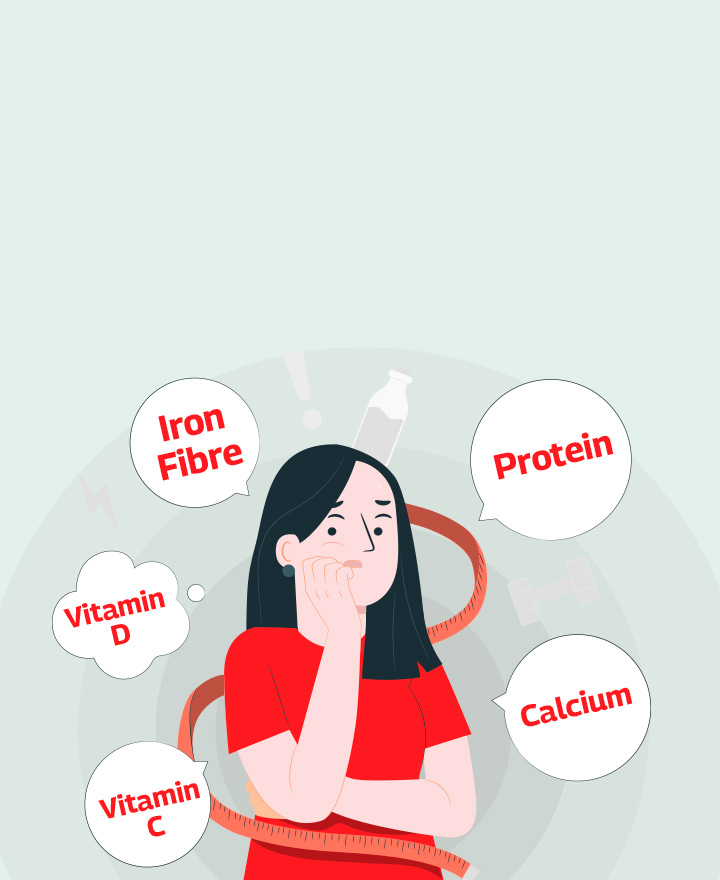

Airborne Diseases: Causes and Symptoms During Rainy Season
Airborne diseases are caused by the direct or indirect transmission of pathogens. These pathogens are on the rise during rainy season due to wet climate and increased humidity. The common cold and flu are mostly common during this season. However, several more severe ailments can also develop from these symptoms. These include COVID-19, measles, chickenpox, tuberculosis, and more. Airborne ailments are more common in children, old people, and those with a weak immune system. Read on to know more.
Causes
During the monsoon season, several factors contribute to the spread of airborne diseases:
1. High Humidity:
Increased moisture in the air can facilitate the survival and spread of airborne pathogens.
2. Heavy Rainfall:
Rain can lead to flooding, creating environments conducive to the proliferation of disease-carrying insects and mold.
3. Poor Sanitation:
Flooding can overwhelm sewage systems and contaminate drinking water, increasing the risk of diseases.
4. Crowded Living Conditions:
People may crowd into temporary shelters, increasing the likelihood of disease transmission.
5. Increased Respiratory Infections:
Cold and damp conditions can lower immune resistance, making individuals more susceptible to respiratory infections.
6. Inadequate Ventilation:
In many regions, buildings may be poorly ventilated, which can trap airborne pathogens indoors.
These factors combined create a conducive environment for the spread of airborne diseases during the monsoon season.
Symptoms to watch out for
Some of the most common airborne ailments during the rainy season are:
• Common Cold and Flu
Symptoms
• Moderate to high fever at regular intervals for 2 to 3 days
• Headache
• Tiredness
• Sore Throat
• Runny Nose
• Coughing and sneezing
• COVID-19
Symptoms
• Fever
• Cough
• Runny Nose
• Breathlessness
• Fatigue
• Pain in the joints
• Influenza
Symptoms
• Nose, Throat, and Lungs Infection
• High Fever
• Body Chills
• Frequent bouts of coughing
• Sore Throat
• Runny Nose
• Body Pain
• Fatigue
• Headache
• Diarrhoea
• Nausea
• Chicken Pox
Symptoms
• Fever
• Headache
• All Symptoms of Flu
• Decreased appetite
• Fatigue
• Rashes and blisters all over the body and sometimes inside the mouth
If you have these symptoms, you should also test yourself to rule out other airborne diseases like whooping cough, measles, tuberculosis, and diphtheria. Talk to your doctor immediately, if high fever and cold persist for more than 3 days.
Importance of Early Diagnosis and Treatment
Airborne sickness is mostly caused by viral and fungal infections. You must watch out for the symptoms carefully and get them treated on time.
• Diphtheria, for example, though a rare disease, starts with usual flu and common cold-like symptoms in children. However, if left undiagnosed and untreated on time, it can damage vital organs like heart, lungs, and respiratory system, eventually leading to death.
• When skin rashes and high fever (mostly seen in measles and chickenpox cases) are not diagnosed and treated on time, they can cause severe diarrhoea, leading to dehydration in some people.
• Even flu-like symptoms, when not identified on time, can lead to severe ear infections, blindness, and swelling of the brain in a few rare cases.
FAQs
1. Why do rains lead to an increase in diseases?
The wet weather, increased humidity, and stagnated water are perfect conditions for pathogens to breed and increase in numbers. When these disease-causing germs are on the rise, it eventually leads to a lot of monsoon ailments like mosquito-borne, waterborne, and airborne diseases.
2. How to prevent falling sick from airborne diseases?
Avoid visiting public places when it is too crowded. Always wear a mask when stepping out, especially during the monsoons. Keep your home and rooms well-ventilated. Use a towel to close your mouth when coughing or sneezing. When you notice other people coughing or sneezing, don’t go too close to them. Visit a doctor when common cold-like symptoms persist for 2-3 days.
Conclusion
Airborne illness is very common during the rainy season. The gloomy climate and the increased humidity are the primary reasons for the direct and indirect transmission of the pathogens. Airborne diseases mostly affect children, senior citizens, and those with weak immunity. Hence, it is important to watch out for these symptoms in their bodies and seek medical help without delay to avoid further complications.
One of the important components of our overall wellness is also being financially secured. Healthcare emergencies can happen any time, but a good health insurance policy can protect you from such uncertain situations. To know more about Wellness and other health related tips, visit the wellness corner.
Source: metropolisindia.com, medicalnewstoday.com, healthline.com
Disclaimer: This blog provides general information and discussions about health and related subjects. The information and other content provided in this blog, website or in any linked materials are not intended and should not be considered, or used as a substitute for, medical advice, diagnosis or treatment. Kindly contact your Doctor before starting a new medicine or health regime.
Related Articles
Causes of Measles- Understanding the Viral Infection
What is Pneumonia- Symptoms & Causes
Mosquito-Borne Diseases in Monsoon - Types, Symptoms & Treatment
Lymphatic Filariasis- Symptoms, Causes, and Effective Treatment
Essential Rainy Season Precautions for Health & Safety
Published on October 22, 2024














 Car Insurance
Car Insurance  Bike/Two Wheeler Insurance
Bike/Two Wheeler Insurance  Health Insurance
Health Insurance  Pet Insurance
Pet Insurance
 Travel Insurance
Travel Insurance  Home Insurance
Home Insurance  Cyber Insurance
Cyber Insurance  Third Party Vehicle Ins.
Third Party Vehicle Ins.  Tractor Insurance
Tractor Insurance  Goods Carrying Vehicle Ins.
Goods Carrying Vehicle Ins.  Passenger Carrying Vehicle Ins.
Passenger Carrying Vehicle Ins.  Compulsory Personal Accident Insurance
Compulsory Personal Accident Insurance  Travel Insurance
Travel Insurance  Rural
Rural  Critical illness Insurance
Critical illness Insurance